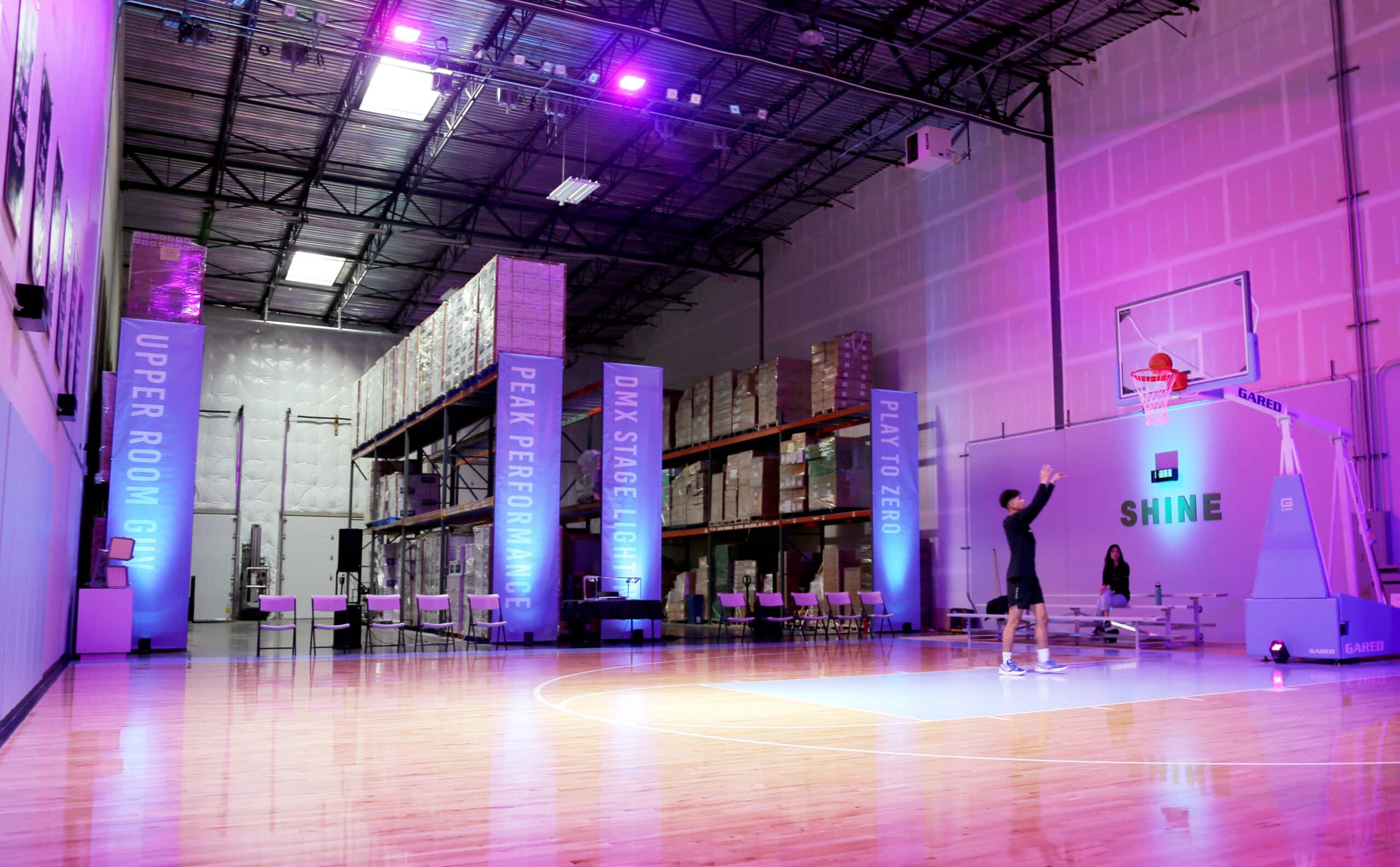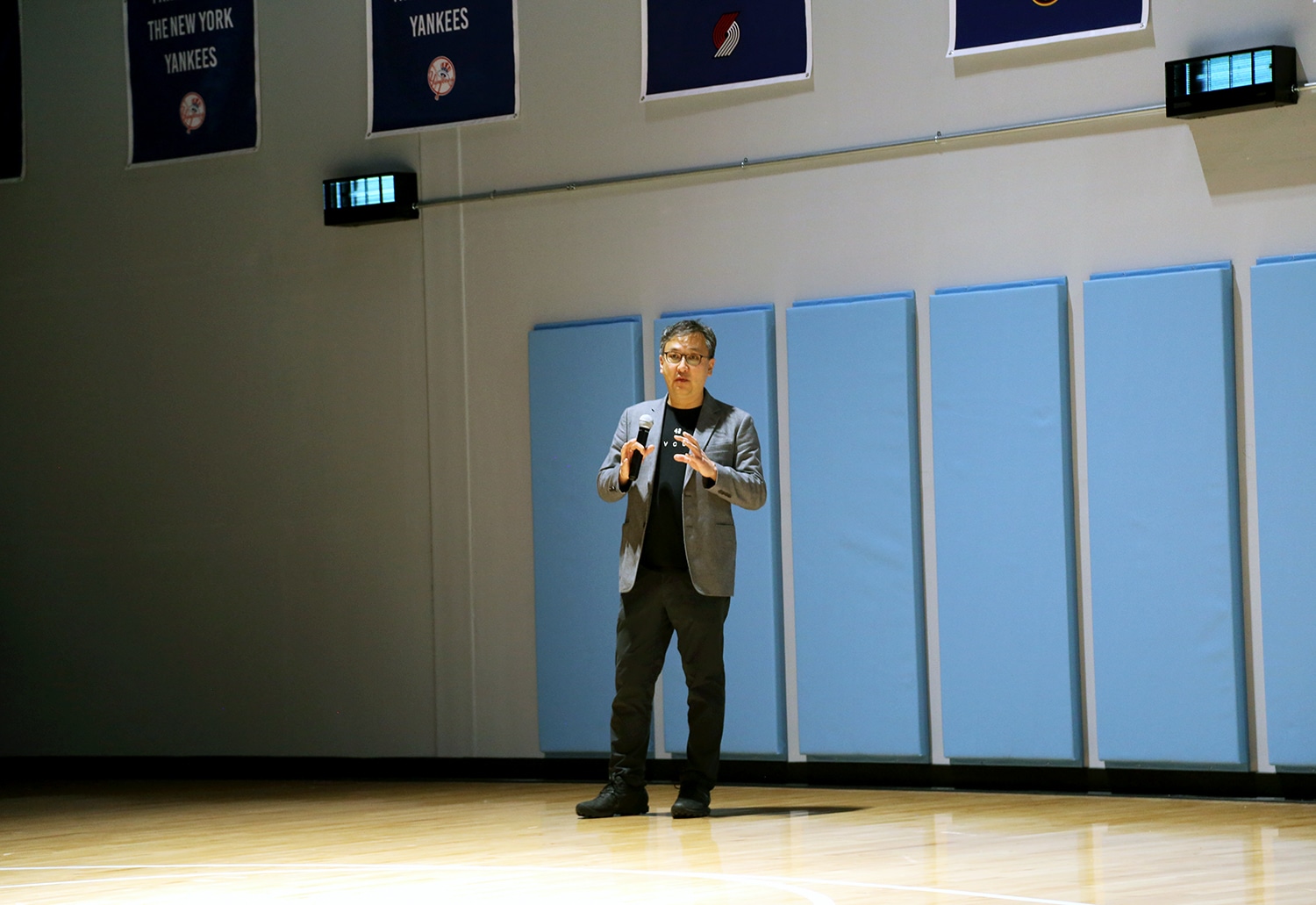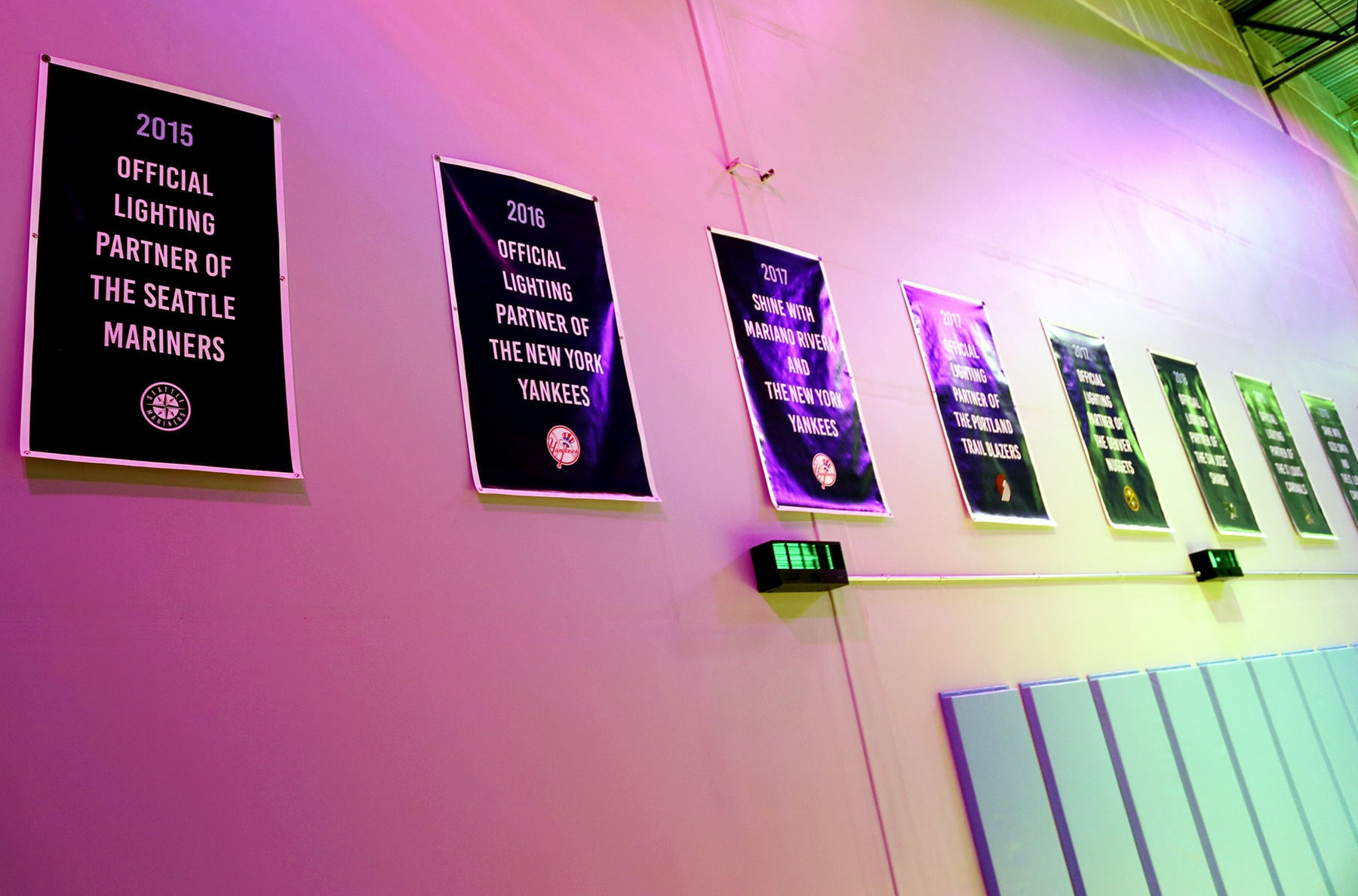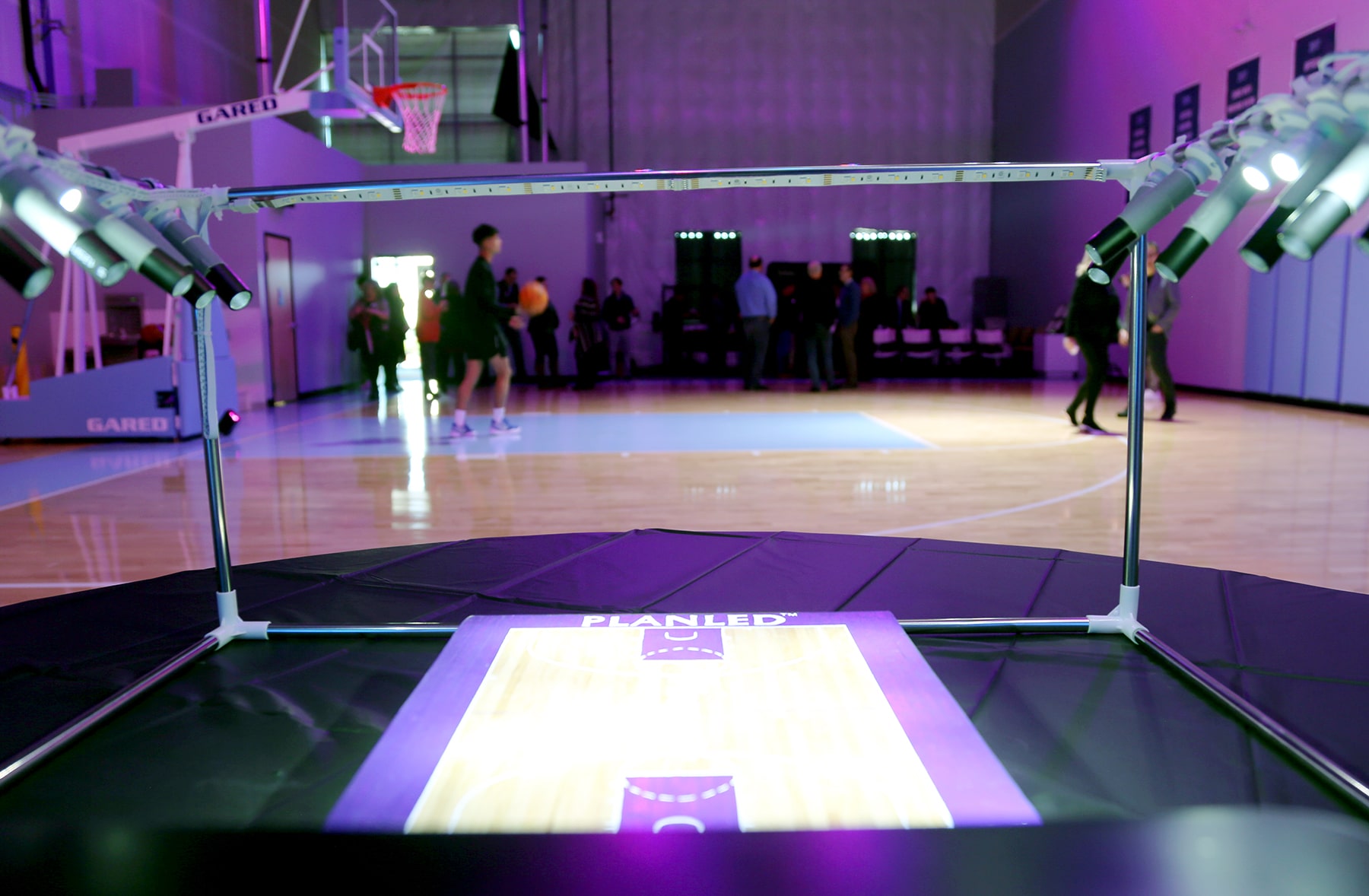Business Community
Business spotlight: PlanLED brings big league experience to Gig Harbor
PlanLED, which recently moved its headquarters and opened a showroom in Gig Harbor, has installed lights in some of the most iconic buildings in the country.
Yankee Stadium in New York. Busch Stadium in St. Louis. Seattle’s T-Mobile Park (neé Safeco Field) and Portland’s Moda Center.
What the company wants to do now is install similar lights (the industry term is “human centric lighting”) in elementary school classrooms and high school gymnasiums.

PlanLED’s Gig Harbor showroom includes a halfcourt basketball floor, which gives visitors and potential clients an idea of what the company’s products can do.
PlanLED moves to Gig Harbor
PlanLED inaugurated a new showroom at the Latitude 47 complex on Bujacich Road in Gig Harbor on Wednesday, Nov. 16. The company also moved its headquarters to a building on Peacock Hill Road in Gig Harbor earlier this year.
CEO John Hwang founded the company after exiting the finance industry following the 2008 subprime mortgage crisis and resulting recession. “I wanted to get into a business with vision,” said Hwang, a Gig Harbor resident.
The company is small, with just 10 employees (“We’re like the special forces,” Hwang says), but mighty. In addition to an all-star lineup of big league sports projects, PlanLED has installed lights for big companies like Boeing and Blue Origin.
For PlanLED, it’s about more than just installing light fixtures. The company believes better lighting can improve performance and quality of life.

PlanLED CEO and founder John Hwang discusses his business at a Gig Harbor Chamber of Commerce function on Wednesday, Nov. 16, 2021. Pennants featuring professional sports franchises with which the company has done business hang behind him. The boxes on the wall are part of PlanLED”s UVCUE air filtration system.
Human-centric lighting
The idea behind human-centric lighting is to replicate daylight in indoor environments.
Studies have shown that human centric lighting can help people be happier and work better. Anecdotally, most people know someone who develops headaches when exposed to long doses of, for instance, fluorescent lighting.
Hwang said about 15 percent of the U.S. population is light-sensitive. And that’s the problem PlanLED is trying to solve.
“We had countless testimonials of people, their lives have been changed,” Hwang said. “They don’t have to take Tylenol at work anymore.”
“Lighting is really an under-appreciated and under-understood, if you will, science,” said Scott Jenkins, PlanLED’s executive vice president of strategic partnerships. “Everyone just takes lights for granted.”
However, “when we go outside on a bright summer day, everybody’s happier. There’s a pep in their step. There’s a reason for that. It’s biological.”

Pennants representing professional sports franchises with which PlanLED has worked adorn the walls inside the Gig Harbor-based company’s new showroom. Among them are the Seattle Mariners, New York Yankees and the NBA’s Portland Trailblazers.
Keeping it clean
The COVID-19 pandemic inspired PlanLED’s new line. The company now offers an air filtration system, called UVCUE, which aims to kill viruses and other germs in enclosed areas.
According to a quote on the company’s website, attributed to Dr. Edward Nardell of Harvard Medical School, the system “works by flooding the upper room with germ-killing ultraviolet light to rapidly inactivate airborne pathogens. All known pathogenic microbes contain either DNA or RNA and are susceptible” to germicidal ultraviolet light.
PlanLED Ribbon Cutting from Gig Harbor Chamber of Commerce on Vimeo.
PlanLED’s UVCUE units are designed to be installed near the ceiling. As body heat and ventilation push air upward, microbes are “inactivated.” The system may generate up to 30 equivalent air changes per hour with proper design and installation.
The target market for UVCUE? Office buildings, nursing homes, movie theaters and anywhere else that people gather.
“One of these units can keep a classroom safe,” Hwang said, gesturing toward a UVCUE unit on a wall at the new showroom. “Which is a big deal.”

An autographed Mariano Rivera jersey hangs in PlanLED’s new Gig Harbor showroom. The baseball Hall of Famer is a partner in the Gig Harbor-based company.
PlanLED and schools
Schools form a big part of the future in PlanLED’s vision. In addition to the anti-viral filtration system, the company wants to bring its LED lighting systems to schools.
And not just to athletic facilities, although much of the company’s Bujacich Road showroom is a brightly lit basketball half-court. The classroom, too.
“We want to bring that big-league experience to the high school gym,” Jenkins said. “And imagine doing that in the classroom, where students will learn better.”
Case in point: PlanLED installed lights at two high schools in Renton. The next year, test scores at both schools went up.
Jenkins acknowledged that the Renton example isn’t exactly a full scientific study. “It’s anecdotal, but there’s a lot of scientific research behind the benefits of human-centric lighting,” he said.
“The better the learning environment, the better the environment. And poor lighting can actually be a detriment to learning.”

A demonstration model of a basketball court, and the real thing, inside PlanLED’s new Gig Harbor showroom.
